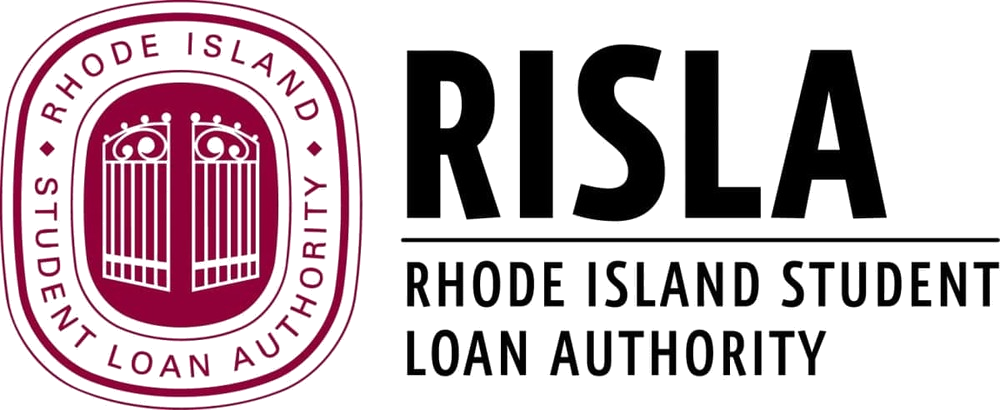Our goal is to give you the tools and confidence you need to improve your finances. Although we receive compensation from our partner lenders, whom we will always identify, all opinions are our own. Credible Operations, Inc. NMLS # 1681276, is referred to here as "Credible."
If you have private student loans and are struggling to make your payments due to COVID-19, contact your loan servicer to see if there are any hardship programs available.
If you’re in danger of missing a student loan payment and don’t have enough cash in the bank, you might be considering other options — such as paying student loans with a credit card.
Most student loan servicers don’t allow you to make payments with a credit card. While there are some potential workarounds (like cash advances or third-party services), using a credit card to make student loan payments comes with some major drawbacks.
Here’s what you should know about paying student loans with a credit card:
- Can you pay student loans with a credit card?
- Finding the right credit card to pay with
- Is paying with a credit card worth it for the rewards?
- Paying student loans with a credit card could cost you in the long run
- Alternatives to paying your student loans with a credit card
- You can find better ways to catch up on your student loans
Can you pay student loans with a credit card?
Some private student loan lenders accept credit card payments under certain circumstances, but federal student loan servicers do not.
This is because the U.S. Treasury Department instituted rules that forbid credit cards from being used to pay debt obligations — including student loans. You can only make payments on your federal student loans from your checking or savings account.
However, some loopholes allow you to use your credit card to make payments. For example, some third-party services — such as Plastiq — will facilitate using a credit card to make loan payments.
With Plastiq, you can make loan payments via ACH transfer, check, or wire transfer after submitting the information for your servicer and your credit card information.
While such a service might be helpful as a last resort, these fees will add up if you continuously rely on companies like Plastiq to make student loan payments.
Check Out: When to Refinance Student Loans
Finding the right credit card to pay with
Besides third-party payment services like Plastiq, the other way to use a credit card to pay your student loans is through a balance transfer credit card. In this case, you’re not really charging your student loans to your card. Instead, your credit card issuer pays your student loan servicer directly and adds the balance transfer amount to your credit card balance.
If you’re interested in a balance transfer, you’ll need to find a credit card that allows you to transfer your student loan balance. Ideally, you’ll find a card with a generous welcome bonus to help you offset potential interest charges and fees. And, if your credit is good, you may be able to qualify for a 0% balance transfer card that doesn’t charge interest.
A 0% APR credit card can be a valuable tool. These cards offer interest-free introductory periods, typically ranging from six to 21 months. But remember, once the introductory period ends, the card’s regular APR will kick in, and you’ll be on the hook for the interest on your remaining balance.
It’s also wise to ensure that your card provider doesn’t handle the payment as a cash advance, which is essentially a short-term loan, typically with substantially higher interest rates and fees.
Citi, a Credible partner, offers balance transfer credit cards that allow you to transfer your student loan balance, including:
- Citi Simplicity® Card
- Citi Rewards+® Card
Is paying with a credit card worth it for the rewards?
Using a balance transfer card is an option to pay student loan debt, but it’s a potentially risky and expensive one. Bear in mind, balance transfer credit cards — including 0% interest cards — typically charge a 3% to 5% fee of the amount transferred, with a minimum transfer fee between $5 and $10.
So, if you transfer $15,000 in student loan debt to a balance transfer card, you’d likely incur $450 to $750 in fees, which can offset any points, miles, and rewards you get from the card. The transfer processing fee could also cut into any interest savings you might get.
Ultimately, you’ll have to run the numbers to determine if your rewards exceed your fees, or vice versa. If it doesn’t make financial sense, you may find using your credit card to pay student loans is more hassle than it’s worth.
What happens after you make a card payment?
If you decide to pay a student loan with a credit card, it’s essential to pay it off in full on time. If you get a 0% introductory offer, the APR will spike when the promotional period ends.
Let’s assume you transferred $15,000 of student loan debt to your 0% interest credit card, and you paid off $10,000 of the balance before the introductory period ended. If the APR jumps to 16.17%, you’d owe $5,808.50: the remaining balance ($5,000) plus $808.50 in interest (16.17% of $5,000 = $808.50).
Paying student loans with a credit card could cost you in the long run
If you’re struggling to keep up with your payments, using a credit card to make your payments and avoid having any student loans in default can seem like a good idea. But using a credit card for your payments can have costly consequences:
- Cash advance fees: Most credit cards charge you a fee to take out a cash advance that is separate from the interest charges. For example, the fee might be 5% of the loan amount or $10, whichever is greater. If your loan payment was $300, you’d pay a $15 fee for a cash advance.
- Interest charges: Interest rates on credit cards are usually much higher than student loan interest rates. Federal student loans currently have fixed rates as low as 5.50% for undergraduates and 7.05% for graduate or professional students. The average interest rate on credit cards, on the other hand, is 20.68% as of May 2023, according to the Federal Reserve.
- Fewer protections: Student loans typically have more repayment benefits than credit cards. If you can’t afford your payments or are facing financial hardship, you could be eligible for deferment, forbearance, or alternative repayment plans for your federal student loans. Credit cards don’t offer those protections, which means you’re on the hook for payments even if you lose your job or have a medical emergency.
- Higher debt-to-income ratio: By shifting your payments to credit cards, you’re increasing the amount of debt you have. This will cause your debt-to-income (DTI) ratio to rise. A higher DTI ratio can negatively impact your credit score and make it difficult to qualify for other forms of credit.
Alternatives to paying your student loans with a credit card
While there are ways to pay student loans with a credit card, it’s typically a bad idea. If you’re in danger of missing student loan payments, consider these other strategies instead:
Apply for deferment or forbearance
If you’re unemployed or facing another financial hardship, you might be eligible for student loan deferment or forbearance, which allow you to temporarily postpone your loan payments.
Federal student loans are eligible for up to 12 months of deferment or forbearance. Some private lenders also provide deferment and forbearance options.
For example, College Ave, a Credible partner lender, offers up to 12 months of forbearance for borrowers experiencing hardship, typically in three- to six-month increments.
See: Student Loan Deferment vs. Forbearance
Contact your student loan servicer
If you’re ineligible for forbearance or deferment, contact your loan servicer to discuss your options. Some lenders offer alternative payment plans that allow you to make lower student loan payments in cases of temporary hardship.
For example, RISLA offers an income-based repayment program. If you qualify, RISLA will extend your repayment term up to 25 years and cap your monthly payment at a percentage of your income.
Learn More: Lenders That Will Refinance Student Loans for Non-Graduates
Apply for income-driven repayment
If you have federal student loans, you’ll likely qualify for an income-driven repayment (IDR) plan. Under an IDR plan, your monthly payment is determined by your discretionary income and family size.
Plus, if you keep up with your payments, you could have your remaining loan balance forgiven after 20 to 25 years, depending on the plan.
Four IDR plans are available:
- Income-Based Repayment (IBR): The IBR plan is available to borrowers who can demonstrate financial hardship. Your payments will be capped at 10% to 15% of your discretionary income, depending on when you took out your loans — though you’ll never pay more than what you would under the Standard Repayment Plan. Under IBR, you could have your loans forgiven after 20 to 25 years of payments.
- Income-Contingent Repayment (ICR): With ICR, you’ll pay the lesser of either 20% of your discretionary income or what you’d pay with fixed monthly payments over 12 years. You could have the remainder of your balance forgiven after making 25 years of payments.
- Pay As You Earn (PAYE): Your payment will be capped at 10% of your discretionary income on PAYE and will never exceed what you’d pay under the Standard Repayment Plan. Like IBR, you must demonstrate financial hardship to qualify for PAYE. Under this plan, you could be eligible for loan forgiveness after 20 years of payments.
- Revised Pay As You Earn (REPAYE): You’ll generally pay 10% of your discretionary income under REPAYE, though there’s no payment cap like the other IDR plans. Depending on whether you have undergraduate or graduate student loans, you could qualify for forgiveness after paying for 20 to 25 years.
Check Out: Refinance Student Loans With Bad Credit
Consolidate your student loans
Another option for federal student loan borrowers is a Direct Consolidation Loan. If you consolidate your loans, you can extend your repayment term up to 30 years.
While your interest rate won’t change (the interest rate on a consolidated loan is based on the weighted average of your previous debt), a longer term could reduce your payments.
If you have Parent PLUS Loans, consolidating them will also make you eligible for the ICR plan.
If you extend your repayment term, you’ll pay more in interest charges over time. You’ll also lose credit for any payments you’ve made toward Public Service Loan Forgiveness.
Learn More: Consolidate Private Student Loans
Refinance your student loans
Another potential way to make your loans more manageable is to refinance your student loans. If you refinance student loans, you could qualify for a lower interest rate. Or you might extend your repayment term, which will likely reduce your student loan payment.
If you decide to refinance, be sure to consider as many lenders as possible to find the right loan for you. Credible makes this easy — you can compare your prequalified rates from our partner lenders in the table below in two minutes.
| Lender | Fixed rates from (APR) | Variable rates from (APR) |
|---|---|---|
 | 3.85%+ | 4.86%+ |
 | 5.89%+1 | 6.53%+1 |
 | 6.99%+2 | 6.99%+2 |
 | 6.0%+5 | 7.57%+5 |
 | 4.84%+3 | 4.86%+3 |
 | 5.12%+4 | 8.52%+4 |
 | 4.89%+ | 5.04%+ |
 | 6.2%+ | N/A |
 | 6.34%+ | N/A |
| Compare personalized rates from multiple lenders without affecting your credit score. 100% free! |
||
All APRs reflect autopay and loyalty discounts where available | 1Citizens Disclosures | 2College Ave Disclosures | 5EDvestinU Disclosures | 3 ELFI Disclosures | 4INvestEd Disclosures | 7ISL Education Lending Disclosures | 8Nelnet Bank Disclosures |
||
You can find better ways to catch up on your student loans
While paying student loans with a credit card might be appealing, it could cost you over the long run. Credit cards typically have high interest rates and fees, and they come with fewer protections than student loans.
If you decide that refinancing could help you manage your loans, remember to shop around and compare as many lenders as you can. This way, you can find a loan that fits your needs — which might include a lower interest rate or extended repayment term. You can easily compare multiple lenders with Credible after filling out a single form.
Use our Student Loan Score tool below to see how much you can save by refinancing your student loans.
Tim Maxwell contributed to the reporting for this article.
